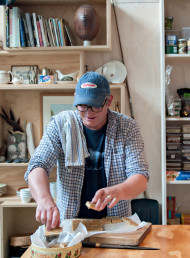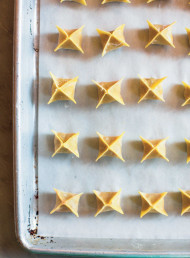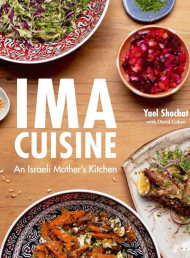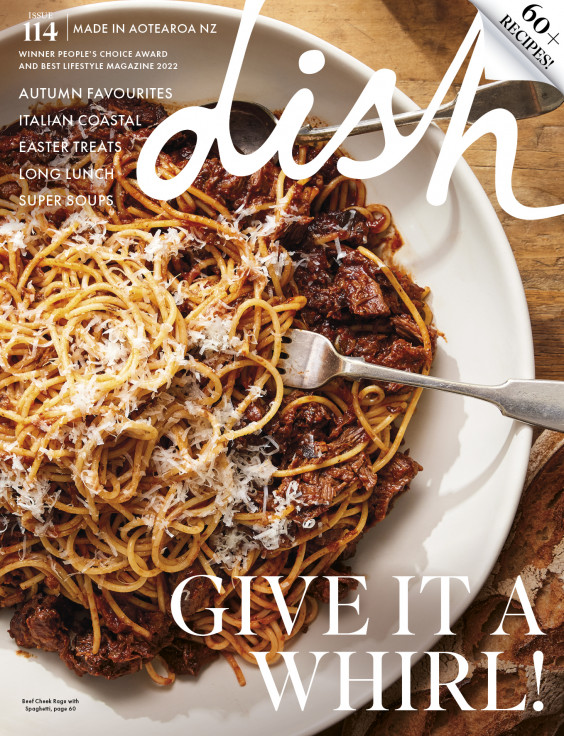Cook the Books – Anatolia
Photography by David Parker .
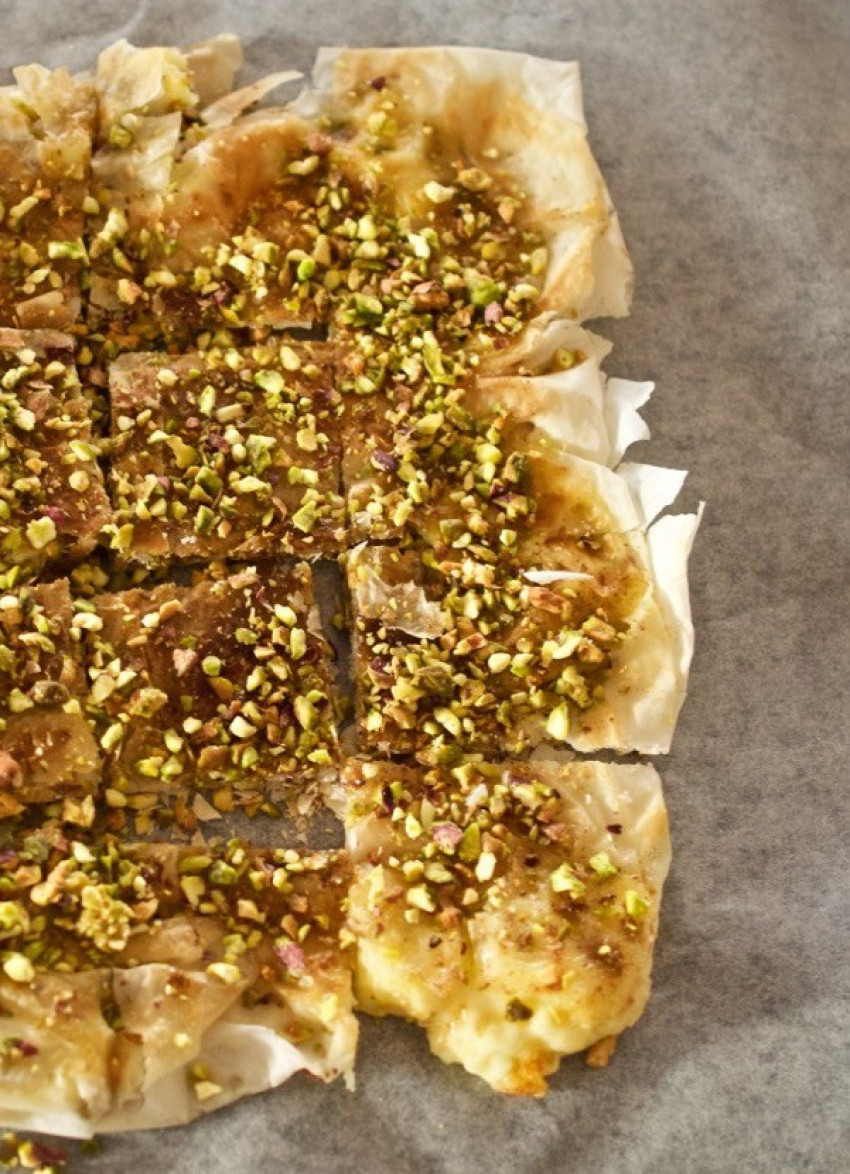
Sweet pistachio pancakes made with filo pastry captured David Parker's curiosity in this week's cookbook review column, as he reviewed Turkish/Australian-influenced 'Anatolia'.
Read our story on 'Anatolia' in the current issue of Dish, which features the pancake recipe David reviewed alongside two additional recipe extracts. You can also view the Katmer – Pistachio Pancake recipe online here.
Anatolia is a collaboration between Turkish Chef Somer Sivrioğlu and Australian political journalist/pop culture commentator/travel and food writer David Dale. Somer lives in Australia and runs Sydney restaurant Efendy. According to Somer, Australians think he is cooking Turkish food and Turkish people think he is doing some sort of weird Australian/Turkish fusion thing. From the naive eyes of a British New Zealander, this book seems to be very focused on traditional Turkish cooking with just a few Australian twists, but what do I know?
There's something so appealing about pistachios. I don't think I've ever had too many – it could be my insatiable craving for all things salty – but if we have pistachios in the house you'll no doubt find small piles of shells in the bin on a regular basis. Maybe that was the reason the recipe for Katmer – Pistachio Pancakes stood out to me. It mostly requires the same ingredients as baklava, but without sugar syrup to make the pastry soft, sickly sweet and sticky.
They're not what we imagine to be pancakes; instead of batter they use thin sheets of filo pastry. I have seen the confused face you undoubtedly just made reading that every time I have explained the 'pancakes' to anyone. Intruiged? So was I.
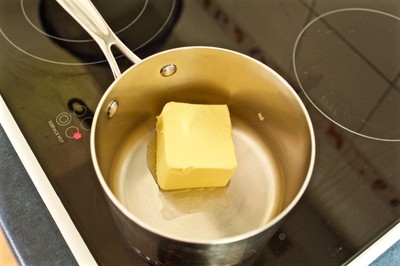
I started off by making the ghee. Ghee is clarified butter. To make it, you melt butter in a pan until it bubbles and then let it cool off in the fridge overnight. The next day, scrape the solids off the top to reveal the liquid clarified butter underneath. Great! (I have to admit that I made the recipe once more using left-over ingredients and found melted butter was just as effective).
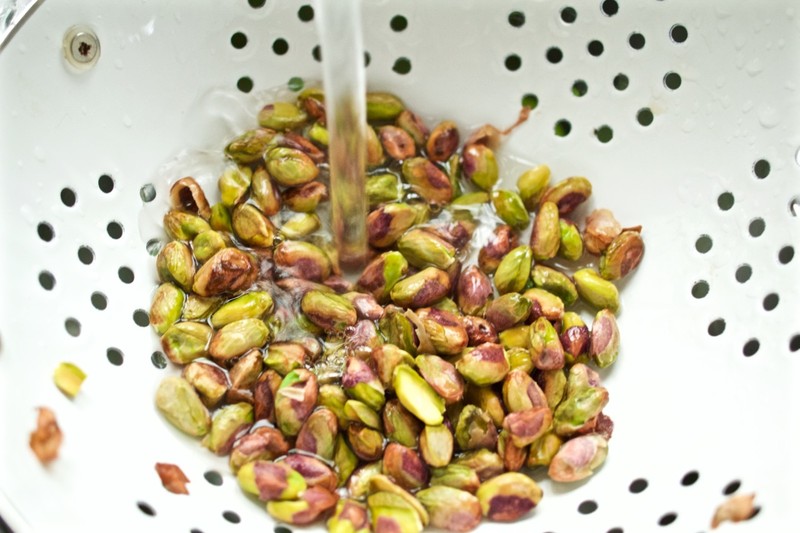
It's important for this recipe to use unsalted pistachios. I did not follow this advice. I thought I had; I found three different ways to buy pistachios in the supermarket, two were labelled 'salted and roasted' and one pack was simply labelled 'roasted' – they must be unsalted, right? Wrong. I needed to shell them anyway so I peeled the reclusive pistachios from their annoyingly difficult shells. This is actually a very time consuming process, especially if like me you're eating every second pistachio. It was while I was cursing the shells that it was pointed out to me that I should have just bought shelled pistachios. I didn't know these existed but if I did I would've bought them. To remove the salt I ran the shelled pistachios under a tap for a while and then dried them off in a low oven, then left to cool.
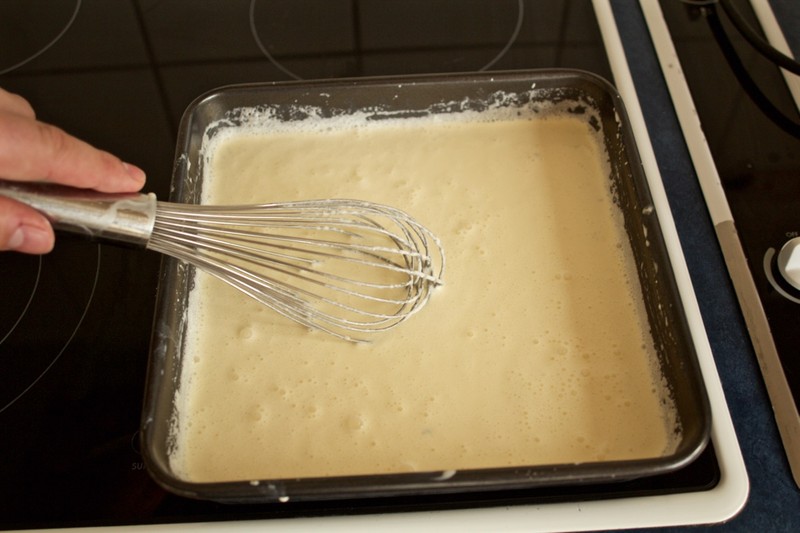
While the pistachios were cooling I started to work on the kaymak from a previous recipe. Kaymak is clotted cream, and according to the book you could substitute it with double cream, but I couldn't find any at our little local supermarket. So I whisked the cornflower with the milk and cream to dissolve it and then poured that into a baking tray to whisk over heat.
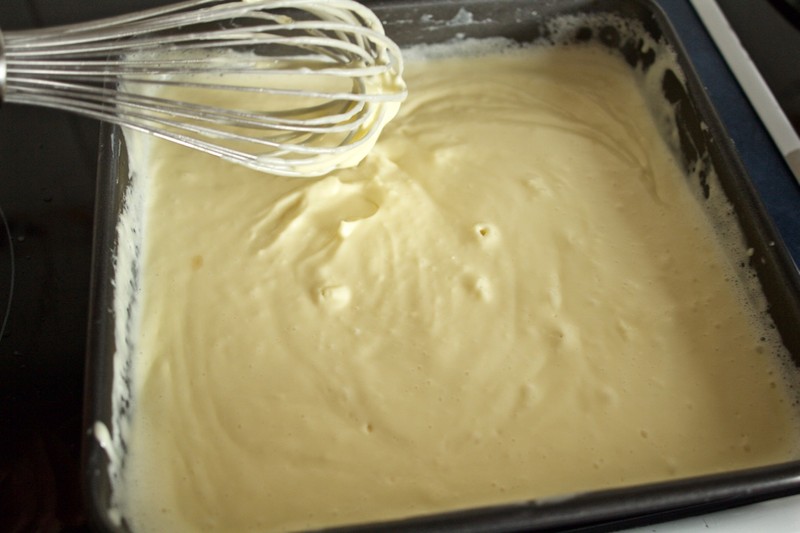
I don't really know why it needed to be a baking tray and not a saucepan? Perhaps so a larger hot surface area touches the cream? I was sure there was a good reason so I found a tray about the same size as the book suggested and put it over a gentle heat. After the prescribed five minutes the milk, cream and cornflower mix hadn't warmed at all so I left it for another five before I added the butter and continued whisking. About 15 minutes in and I wasn't sure it was going to do anything, but just as I voiced my concerns to anyone passing me in the kitchen it started to thicken! Very suddenly it transformed from a milky consistency to the texture of thick yoghurt. I was very relieved! It went into the fridge to cool.
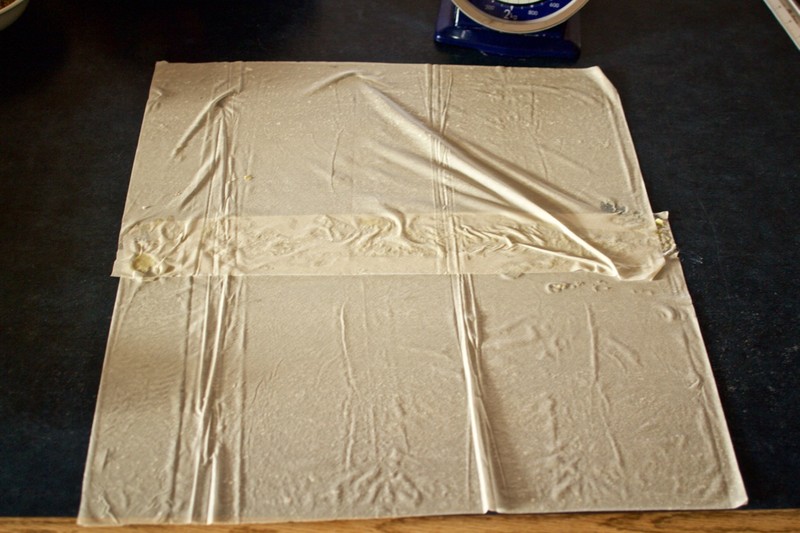
The kaymak cooled, I processed the pistachios in the food processor and was ready to assemble a pancake. It felt very wrong to lay out just one sheet-thick of the filo on the bench to be topped and folded. Surely this wasn't thick enough? But I laid out the two rectangular sheets to make a square and brushed the overlap area with ghee to stick the sheets together.
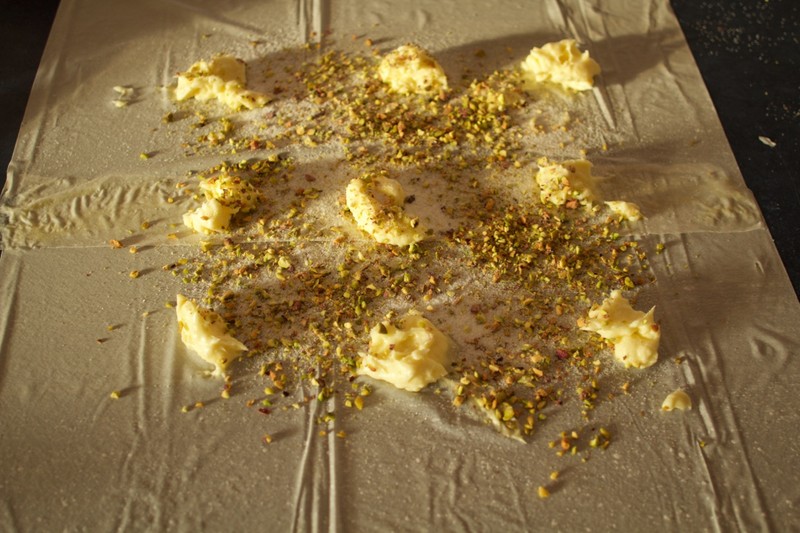
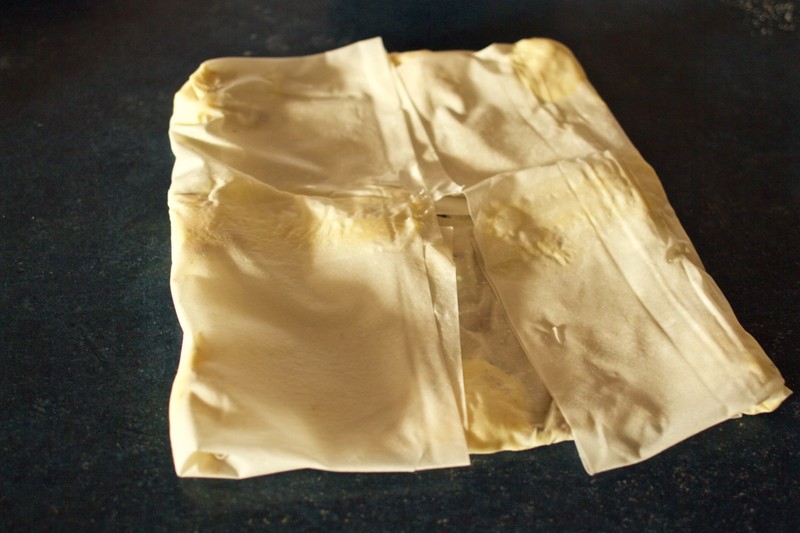
Then I topped with a 3x3 square of dollops of the kaymak, a sprinkling of sugar and the pistachios. I folded in the edges of the pastry to make a flat parcel. As suspected I did tear a corner before getting the delicate package into the frying pan – it didn't matter much, the kaymak didn't really leak or burn. At this point I still had no idea how they would taste! I carefully flipped the pancake with two fish slices. It worked! It had gone golden brown and crispy on the bottom.
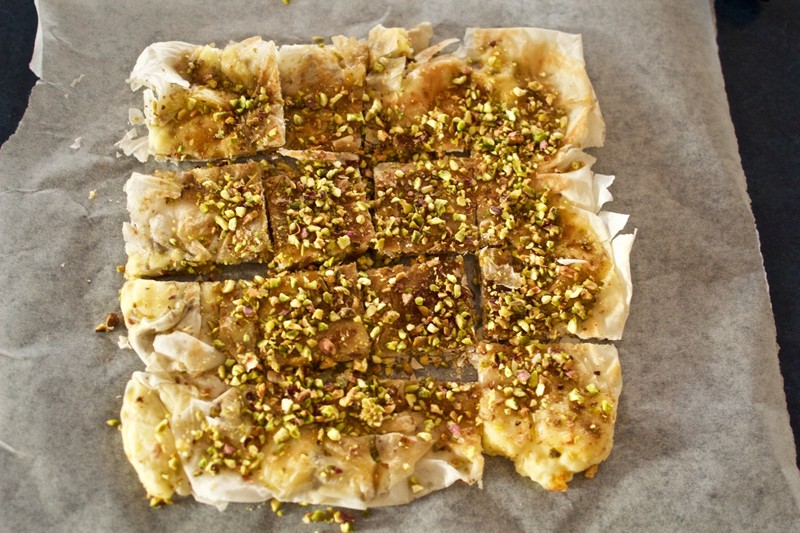
In the photos the pancake top has clearly been sprinkled with more pistachios after cooking but there is no mention in the recipe of sprinkling! Although I'm sure anyone who takes a few seconds to look at the photos and loves pistachios as much as me would do the same.
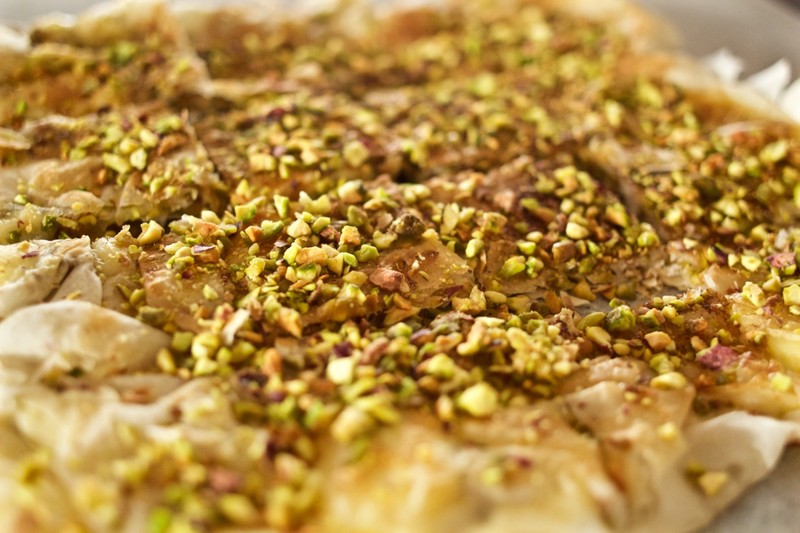
They were great! I really had no idea what to expect but they were very sweet without being baklava sweet (which I often find too sickly). The pastry was a little salty and crisp on the outside but the layers on the folded side were a little softer and chewy, and the cream was thick but soft and really helped offset the sweetness.
If I was making these again (and I definitely will) instead of spending time making the kaymak I would buy double cream (Lewis Rd Creamery does double cream). I'd buy pre-shelled pistachios and just use melted butter instead of ghee. These would be so easy to knock up, I'm sure I could have even done them when I was hungover at 10am on a Saturday morning, exactly the time when I was craving them.
The recipe suggests serving two little squares per person with a cup of tea, I am on board with the cup of tea, but I may have accidentally eaten a whole pancake to myself, in the interest of reviewing it properly of course! It's a tough job sometimes.
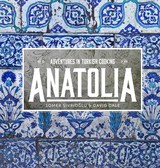
This is an edited extract from Anatolia by Somer Sivrioğlu and David Dale, pulished by Murdoch Books, RRP $99.99.
latest issue:
Issue #114
Autumn has arrived, and with it, the latest issue of dish, jam-packed with recipes that will have you fizzing to get in the kitchen! With a long Easter lunch featuring perfectly pink, blushing roast leg of lamb and wildly decadent baked mashed potatoes with caramelised onions, to simply scrumptious chocolate treats and sensational seasonal baking this issue has you covered - we reckon the Hot Cross Buns are our best yet! Salads make way for soothing soups, pies, puddings and our cover star beef cheek ragù with spaghetti – a must-make dinner for family and friends. With over 60 recipes in our latest issue there’s plenty of inspiration to keep you busy – and well-fed! Don’t forget to share your dish dishes with our Facebook community.

